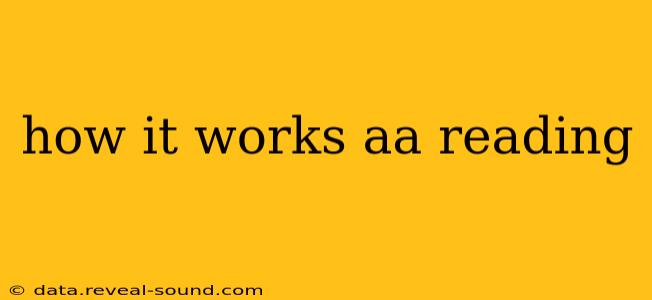How Does Assisted Reading Work? A Deep Dive into Assistive Technologies
Assisted reading, also known as assistive reading technology, encompasses a range of tools and techniques designed to improve reading comprehension and fluency for individuals with diverse learning needs and disabilities. These technologies aren't just for students with diagnosed conditions; they can benefit anyone struggling with reading, whether due to dyslexia, visual impairments, ADHD, or simply a desire to enhance their reading skills. This article explores how different assisted reading methods work, addressing common questions and highlighting their benefits.
What are the different types of assisted reading technologies?
Assisted reading technologies employ various approaches to support readers. These include:
-
Text-to-speech (TTS) software: This is perhaps the most common type. TTS software reads aloud digital text, allowing users to listen while simultaneously following along visually. This can improve comprehension by engaging both auditory and visual learning styles. Many TTS programs offer customizable features such as adjustable reading speed, voice options, and highlighting of currently spoken words.
-
Optical Character Recognition (OCR) software: OCR converts scanned images of printed text or handwritten documents into editable text files. This is invaluable for accessing printed materials that aren't already in digital format, making them compatible with other assistive technologies like TTS.
-
Dyslexia-specific software: Programs designed specifically for dyslexic readers often incorporate features such as colored overlays, adjustable font sizes and styles (e.g., OpenDyslexic font), and line spacing adjustments to reduce visual strain and improve readability. They may also include word prediction and spelling correction tools.
-
Augmentative and alternative communication (AAC) devices: For individuals with severe communication challenges, AAC devices can assist with reading by providing visual supports and alternative ways to interact with text.
-
Screen readers: These are software programs that vocalize the contents displayed on a computer screen. They are particularly beneficial for visually impaired readers, allowing them to access digital content independently.
How does text-to-speech (TTS) improve reading comprehension?
TTS improves reading comprehension by engaging multiple senses. Listening to the text reinforces visual processing, aiding memory and understanding. The auditory input can also help break down complex sentences and unfamiliar words, making them easier to grasp. Furthermore, customizable features like adjustable speed allow readers to find a pace that suits their individual needs, preventing frustration and improving focus.
What are the benefits of using assistive reading technologies?
The benefits extend beyond improved comprehension and fluency. Assisted reading technologies can:
- Boost confidence: Successfully navigating challenging texts can significantly improve a reader's self-esteem and motivation.
- Increase independence: These technologies empower individuals to access information and engage in learning independently.
- Enhance learning: They cater to diverse learning styles and preferences, making learning more accessible and enjoyable.
- Improve reading speed and accuracy: With practice, readers can build fluency and accuracy through consistent use.
- Reduce reading fatigue: The multi-sensory approach can lessen strain and improve focus, reducing fatigue.
Are there any drawbacks to using assisted reading technologies?
While the benefits are numerous, potential drawbacks include:
- Cost: Some advanced assistive reading software can be expensive.
- Technical proficiency: Learning to use the software effectively may require some initial training.
- Over-reliance: It's crucial to balance technology use with traditional reading practices to develop comprehensive reading skills.
How can I choose the right assisted reading technology?
Selecting the appropriate technology depends on individual needs and preferences. Consider factors such as:
- Specific learning challenges: Choose software that addresses the reader's unique difficulties.
- Age and reading level: Select programs appropriate for the reader's developmental stage.
- Device compatibility: Ensure compatibility with the reader's computer, tablet, or other devices.
- Budget: Explore both free and paid options, weighing cost against features and benefits.
By carefully considering these factors and exploring available options, individuals can find the perfect assistive reading technology to unlock their reading potential. The key is to approach assisted reading as a supportive tool, empowering readers to become more confident, independent, and successful learners.
